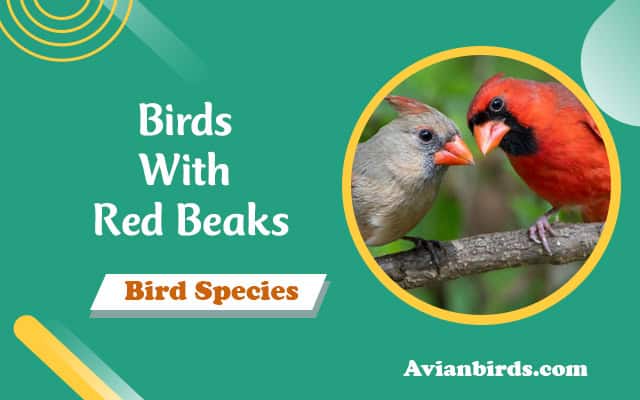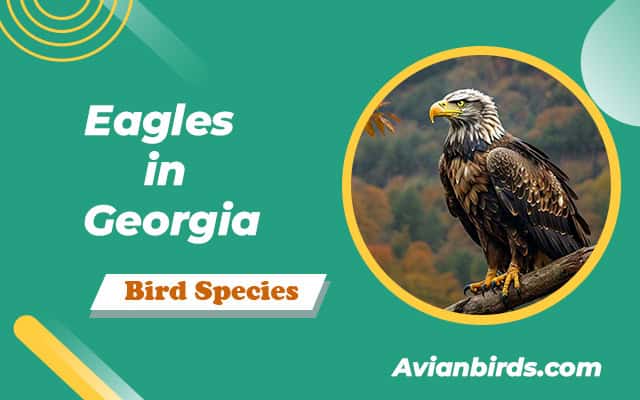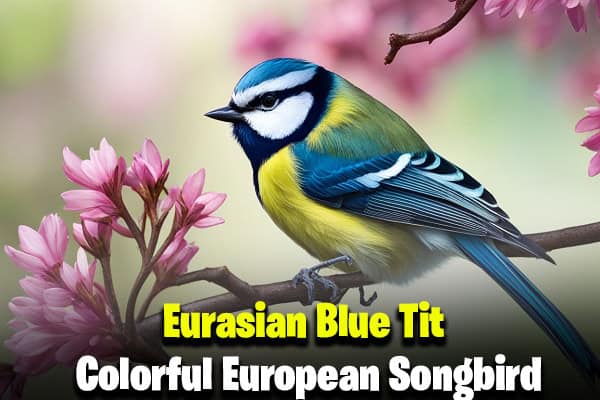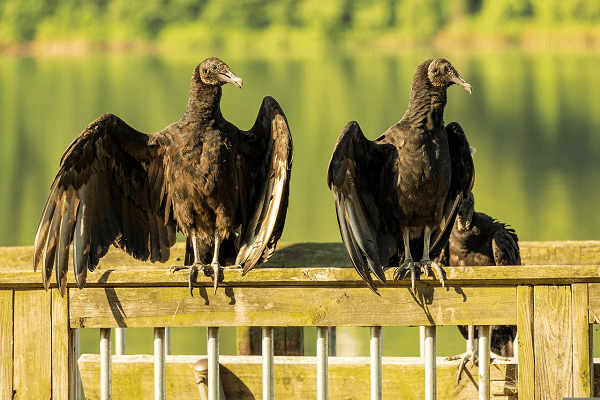10 Types of Small Birds with Red Heads (With Pictures)
Did you know less than 5% of the world’s birds have red heads? This fact shows how rare and special they are. We’ll look into their unique traits, and behaviors, and how we can help them.
Birdwatchers love the bright colors and special looks of these red-headed birds. They are easy to spot and live in many places. We’ll learn about ten of these species in this article. This will help us better understand and enjoy these birds.
Let’s dive into the world of small birds with red heads. We’ll see why they matter for bird conservation and how they make our lives better by being part of nature.
1. Black Grouse
- Scientific Name: Tetrao tetrix
- Size: 42–50 cm (16.5–19.7 in)
- Weight: 800–1,200 g (1.8–2.6 lb)
- Lifespan: 5–10 years
- Diet: Leaves, berries, seeds, and insects.
The Black Grouse, known as Tetrao tetrix, is a captivating bird that grabs our attention. It has a unique look and faces conservation challenges. These birds live between 5 to 12 years, making their lives quite long. By learning about their classification and looks, we can better appreciate their role in nature.
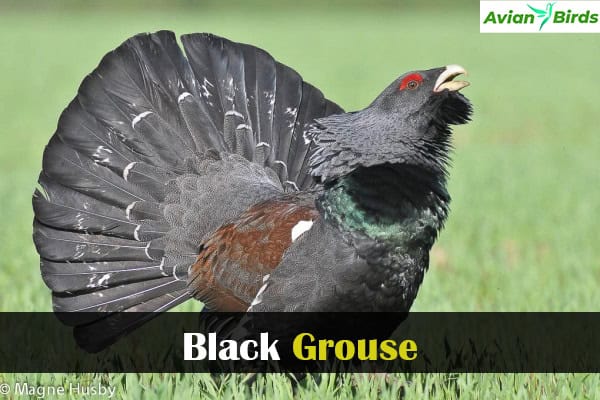
Scientific Classification and Lifespan
The Black Grouse’s scientific name, Tetrao tetrix, shows its place in the bird world. It belongs to the grouse family, setting it apart from other birds. The bird’s lifespan tells us a lot about its environment. Things like food and living conditions greatly affect how long they live.
Physical Characteristics
The Black Grouse is known for its shiny black feathers, which can also show blue or green in the light. Males have a red head and a special tail shape for mating. They also have bright red wattles above their eyes. Females, on the other hand, have a brown and grey look that helps them blend in with their surroundings.
Population Status and Conservation
There are only about 4,800 breeding pairs of Black Grouse left in the wild. This makes them a conservation priority. They are listed as Red, meaning they face big threats mainly from losing their homes due to people. We need to work together to protect their homes to save this amazing bird.
| Characteristic | Details |
|---|---|
| Scientific Name | Tetrao tetrix |
| Typical Lifespan | 5-12 years |
| Male Coloring | Glossy black with blue/green iridescence, red head, lyre-shaped tail |
| Female Coloring | Mottled brown and grey |
| Current Population | Approximately 4,800 breeding pairs |
| Conservation Status | Red (critical) |
2. Swallow
- Scientific Name: Hirundo rustica (Barn Swallow)
- Size: 16–21 cm (6.3–8.3 in)
- Weight: 15–20 g (0.53–0.71 oz)
- Lifespan: 4–8 years
- Diet: Insects, primarily caught in flight.
The swallow Birds with Red Heads, known as Hirundo rustica, is a bird with amazing traits and migration patterns. Watching these birds helps us learn about their life, how to tell them apart, and where they live.

Life Cycle and Migration Patterns
Swallows live about 2 to 3 years. They make a long trip from Africa to the UK every spring. This journey shows their strength and ability to adapt. In the fall, they go back to their winter homes, following a path they’ve taken for years.
Identification Features
Swallows are easy to spot because of their sleek bodies. They have a bright red forehead and throat, but you might miss these as they fly by. Their forked tail and quick flight make them fun to watch as they chase insects.
Habitat and Behavior
Swallows like to nest in places like barns and houses. They work hard to catch insects for their babies, which helps the ecosystem. They are social birds that hang out near water, where they find lots of food during their visit.
| Attribute | Details |
|---|---|
| Species | Hirundo rustica |
| Lifespan | 2-3 years |
| Migration | From Africa to UK |
| Nesting | In barns and houses |
| Key Features | Red forehead and throat, forked tail |
3. Pheasant
- Scientific Name: Phasianus colchicus (Common Pheasant)
- Size: 60–90 cm (23.6–35.4 in)
- Weight: 1–1.5 kg (2.2–3.3 lb)
- Lifespan: 3–5 years (up to 10 years in the wild)
- Diet: Seeds, grains, insects, and berries.
The Pheasant Birds with Red Heads, known scientifically as Phasianus colchicus, is a fascinating bird with unique traits. It’s easy to tell males and females apart in the wild. This makes them interesting to study and observe.

Distinctive Traits of Males and Females
Pheasant Small Birds with Red Heads, Males are stunning with their bright, shiny feathers in rich chestnut and golden-brown. They have a dark green head and red facial wattles. These features make them eye-catching during mating season.
Females, however, blend in with their surroundings. They have mottled brown feathers that help them hide from predators. This shows how the Pheasant’s looks help them survive.
Population and Habitat Information
About 2.3 million female pheasants breed, making up the pheasant population. They are often hunted, which affects their numbers in the wild. Pheasants live in open areas like farmlands and grasslands. These places give them food and shelter.
Knowing where and how many pheasants live helps us protect these lovely birds.
4. Goldfinch
- Scientific Name: Spinus tristis
- Size: 11–12 cm (4.3–4.7 in)
- Weight: 11–20 g (0.39–0.71 oz)
- Lifespan: 3–6 years
- Diet: Seeds, particularly from sunflowers and dandelions.
The Goldfinch, known scientifically as Carduelis carduelis, is a favorite among bird watchers. Its bright colors and sweet songs make it a joy to watch. Learning about its physical features, eating habits, and conservation status helps us appreciate its place in nature.
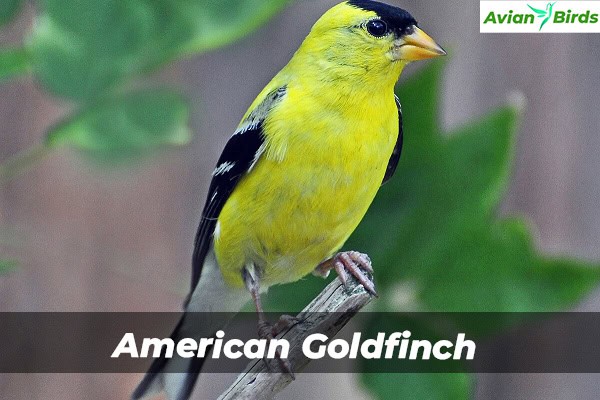
Physical Description of Males and Females
Male Goldfinches stand out with their bright yellow feathers and bold black cap. They also have a red face. Females are less flashy, with similar yellow feathers but no red on their heads. These features make them easy to spot in the wild, where they move in groups.
Feeding Habits and Preferences
Goldfinches love to eat seeds from plants like sunflowers and dandelions. Their strong, pointed bills are great for pulling seeds out. They also enjoy visiting bird feeders, especially for nyjer (thistle) seeds. Watching them eat is a treat.
Conservation Status
The Goldfinch is listed as Green, meaning its population is stable in the UK. About 1.2 million pairs live in various places, showing how adaptable they are. This shows how important it is to keep their habitats healthy. It ensures we can keep enjoying their company for years to come.
5. European Green Woodpecker
- Scientific Name: Picus viridis
- Size: 28–34 cm (11–13.4 in)
- Weight: 160–250 g (5.6–8.8 oz)
- Lifespan: 4–10 years
- Diet: Ants, beetles, and other insects, often foraged from the ground.
The European Green Woodpecker, known as Picus viridis, adds a splash of color to woodlands and grasslands. It has unique habits that make it stand out in our ecosystem.
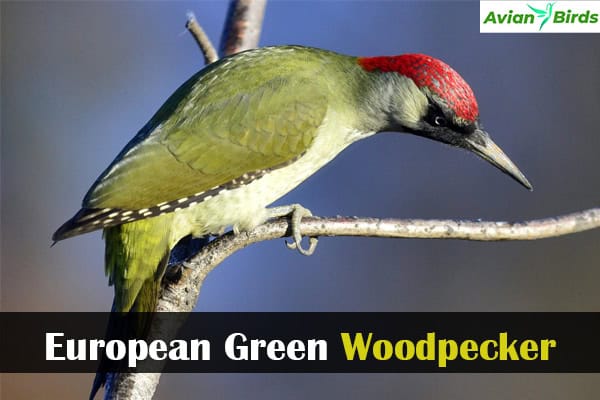
Habitat and Feeding Behavior
This bird loves open woodlands and grasslands, especially those with lots of ground cover. It’s often seen on the ground, looking for food. Unlike other woodpeckers, it eats mainly ants, digging them out of the soil.
This shows how well it can adapt to different places, helping it survive.
Key Identifying Features
When spotting these woodpeckers, look for the differences between males and females. Males have bright green feathers on top and a red crown. Females don’t have the red crown but have a black face pattern instead.
6. Great Spotted Woodpecker
- Scientific Name: Dendrocopos major
- Size: 23–26 cm (9–10.2 in)
- Weight: 70–90 g (2.5–3.2 oz)
- Lifespan: 3–11 years
- Diet: Insects, larvae, nuts, and seeds; often forage on tree bark.
The Great Spotted Woodpecker, known as Dendrocopos major, is easy to spot with its unique looks. Males have black and white feathers with bright red spots on their heads. This bright red spot, along with their loud drumming, helps them communicate and protect their territory.
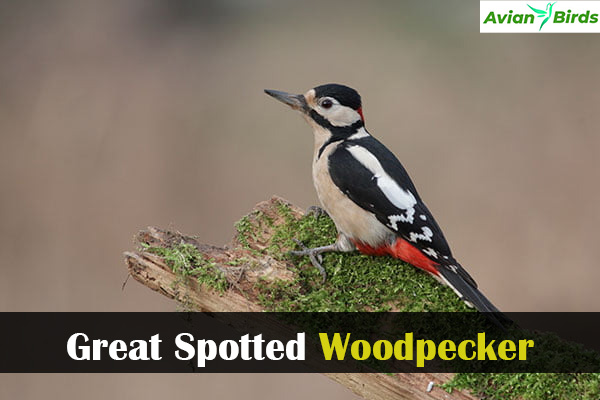
They make a lot of noise by drumming on trees. This not only attracts mates but also tells other woodpeckers they’re around.
Characteristics and Behavior
It’s fun to watch the Great Spotted Woodpecker because they’re so full of energy. They stick to tree trunks, looking for insects in the bark. Their strong beaks let them dig deep into wood to find food like beetles and larvae.
Drumming is a big part of their behavior. It’s a loud sound that fills the forest and lets everyone know they’re there.
Population Trends and Conservation Efforts
About 140,000 breeding pairs of Great Spotted Woodpeckers exist today. This number shows that conservation efforts are working well. Thanks to groups working with local communities, their homes stay safe.
| Aspect | Details |
|---|---|
| Scientific Name | Dendrocopos major |
| Distinctive Features | Black and white plumage, red patch on head |
| Population Size | Approximately 140,000 breeding pairs |
| Conservation Status | No pressing concerns |
| Feeding Habits | Insects, beetles, larvae |
7. Lesser Spotted Woodpecker
- Scientific Name: Dendrocopos minor
- Size: 14–18 cm (5.5–7.1 in)
- Weight: 40–70 g (1.4–2.5 oz)
- Lifespan: 3–5 years
- Diet: Insects, larvae, and tree sap.
The Lesser Spotted Woodpecker, or Dryobates minor, is a bird we might see in the woods. It’s about 15 cm long and has a unique black and white look. The males stand out with their bright red crowns.
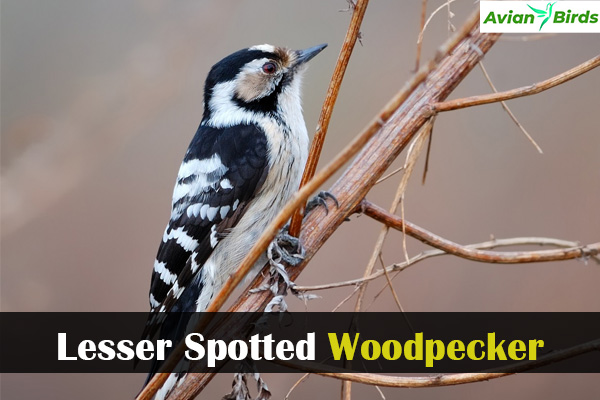
Physical Characteristics
This woodpecker’s looks help it hide in the forest. Its size and pattern let it blend in well. Sadly, there are only 800 to 1,000 breeding pairs left due to habitat loss.
Seeing this woodpecker reminds us of the need to protect its home. By supporting its habitat, we help ensure it thrives for future generations.



